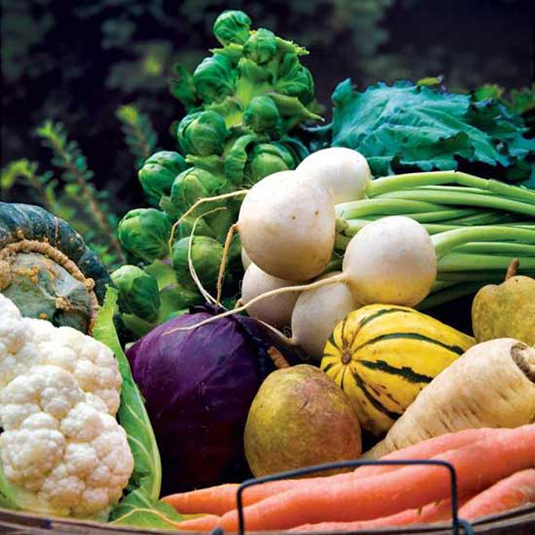
Fall Vegetable Garden
Gardening season is here yet again! This phrase seems “wrong” to say at this time of year with fall harvest occurring, but it is possible to plant a fall vegetable garden outside despite the declining temperatures. To harvest your crop in time you will want to begin soon. This is dependent on what you choose to plant, but a great rule of thumb is to take the average first fall frost date and work backwards with the amount of time the vegetable needs to grow. If possible, you will want to add a little extra time because of the shorter amount of sunlight than in the spring. Frost typically begins in our area mid-October, so this would be a good year for vegetables with a short harvest season. However, knowing that a fall vegetable garden can be planted is useful information for all future fall seasons! If you do want to try to plant something that takes longer to grow, it is not impossible. Crops can be covered with an old sheet, blanket, or tarp when frost is in the forecast and some vegetables you may choose to plant can withstand a frost that stays at 32℉. Spinach, cabbage, radishes, and broccoli can survive frost temperatures down to 28℉.
Before you plant any seeds or plugs, you will want to clear out the garden space from any remaining crops from the past season. Make sure to remove any weeds also to allow your plants to have full access to water and nutrients in the soil. You can include a two-three inch layer of well decomposed compost on top of the soil to give your plants a little help while growing. Fall is a great time to use any leftover seeds you may have of the correct varieties from the spring season. While planting seeds, you will want to bury them slightly deeper into the ground because the soil has less moisture in the fall than it does in the spring. With the short amount of time left before the first frost, what varieties would be good to still plant for this fall?
Radishes would be a great option because they are hardy and have a short growing time. Depending on the variety, you could have radishes ready to eat in roughly 30 days. Radishes grow best in well-drained soil and sunlight. The soil needs to be evenly moist and weeded for best results. Another advantage of radishes is that you can grow a large amount in a small space. The seedlings only need to be thinned to two inches apart to ensure space for roots to grow. Another option to grow is broccoli, which have a longer growing season of around 50 days. However, the plant can withstand a little bit of cold, so you could still see success with a broccoli crop this year. You will need more space to grow broccoli because seedlings will need to be roughly 18 inches apart. Cabbage is another hardy plant but can take about 80 days to be ready to harvest. Although cabbage may not be the best option for this fall growing season, it would be a great choice to consider for future years. A good rule of thumb for the amount of cabbage to grow is to plant four to eight plants per household member. Finally, spinach is a crop option that could still be planted this fall. Spinach takes around 40 days to be ready to harvest, baby spinach leaves will have a sweeter flavor and be more tender in texture. Spinach leaves need to be removed before they turn yellow, a good time frame for this is within a week of formation. All of the listed options are best for cold temperatures because of the late start that would occur if a garden was planted now.